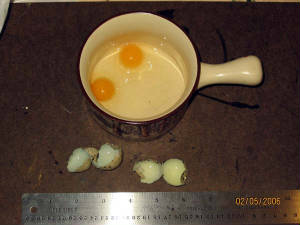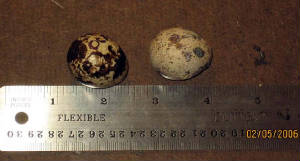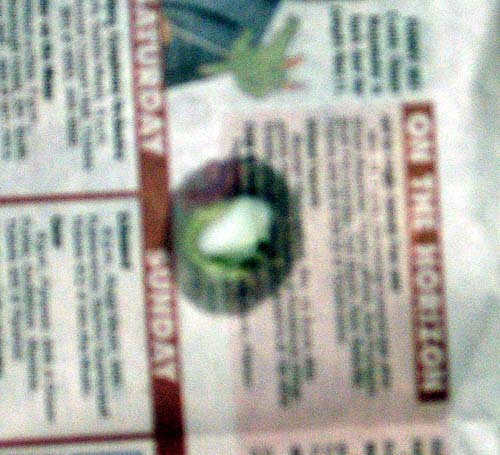|
Feathered Dragons
|
|
|
Japanese Quail Breeding FAQ If you're touchy about sex and sexual acts, you will want to skip this page. Details on Quail mating habits are contained
on this page. Don't say I didn't warn you!
Quail are generally easy to breed. Put a male with two females and bam! The male is trying to mount the female within 5 minutes of meeting the girls. Or so it has been with my breeders. The male produces a foam that helps with reproduction. If you flip the male over, you can actually see the cloaca and the opening to the foam producing gland. Unfortunately, with this species' domestication, they've lost the instinct to sit on their nests. They generally lay where they stand. I find the hen will lay where there's some cover. It seems she likes some security while going through the laying process. Because this species lay so often, they're prone to calcium depletion, egg binding and 'wind' (shell less) eggs. Feed these guys a lot of calcium rich foods, and/or pop in cuttlebone and oystershell grit in their cage. These guys mow through a large cuttle bone through two or three days, so you're going to want to keep the stuff in bulk. Japanese Quail eggs are generally spotted and you can tell the different hen's eggs apart according to color and size. Below is what a J.Quail egg looks on the inside of the shell and what the yolks look like. Their taste is very much like that of a chicken. In this image you can see that inside the freshly cracked egg the inner shell is a blue-green color.
Here you can clearly see a slight bluish covering on the right hand egg. That covering covers most corturnix eggs. This helps prevent bacteria entering the eggs and potentially killing the chick. If you're planing to incubate eggs, it's best to not remove this powder.
|
|||||||||||||||||||||||||||||||
|
The good thing about Quail, is that their eggs are edible AND they're better for you than chicken eggs! They contain less cholesterol. Cockatiels and Conures and Finches, OH MY! |
|||||||||||||||||||||||||||||||



